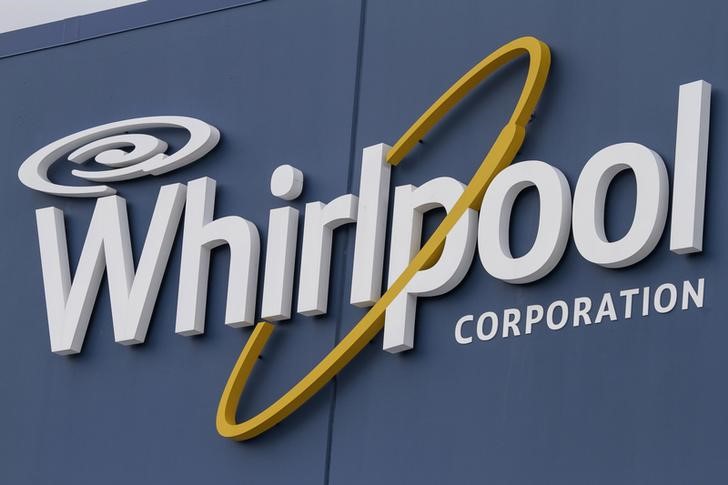AlphaTON stock soars 200% after pioneering digital asset oncology initiative
Investing.com -- Moody’s Ratings has downgraded the senior unsecured ratings of Whirlpool Corporation (NYSE:WHR) from Baa3 to Ba1. At the same time, Whirlpool has been assigned a Ba1 Corporate Family Rating (CFR), a Ba1-PD Probability of Default rating, and a SGL-3 speculative grade liquidity rating. The ratings of the backed senior unsecured notes for its guaranteed subsidiary borrowers, Whirlpool EMEA Finance S.a r.l. (WEF) and Whirlpool Finance Luxembourg S.a.r.l (WFL), have also been downgraded to Ba1 from Baa3. The outlook for Whirlpool, WEF, and WFL remains negative.
The downgrade reflects ongoing operating challenges faced by Whirlpool due to weak consumer demand and a sluggish US housing market. Despite the company manufacturing 80% of the products sold in the US domestically, the potential for a prolonged weak environment due to tariffs could further pressure consumers and delay recovery. Whirlpool’s high financial leverage and negative free cash flow, resulting from its high dividend, are also contributing factors to the downgrade.
Whirlpool’s Ba1 CFR reflects its strong market position in North America and Latin America, significant scale, well-known brand names, and good geographic diversity. The company’s track record of product innovation and margin expansion initiatives are also recognized. However, the ratings are constrained by the cyclical nature of the consumer appliance business and the variability in raw material, labor, energy, and transportation costs.
The company’s net debt-to-EBITDA leverage target is 2.0x, but as of March 2025, it stands at 4.9x, indicating the company’s willingness to reduce leverage over time. However, the company is currently far from this goal as it continues to prioritize a large dividend that could otherwise be used to repay debt.
Over the next 12-18 months, Whirlpool is expected to have flat organic revenue growth. Operating earnings should improve modestly due to cost-saving initiatives and a higher EBIT margin after divesting its lower-margin European business in April 2024. We project Moody’s adjusted debt-to-EBITDA will decline to around 4.5x by the end of 2026 through EBITDA improvement and some debt repayment, including from the planned sell down of the company’s stake in the India business.
Whirlpool’s liquidity is reflected in the SGL-3 speculative grade liquidity rating, with reliance on the revolver to finance significant upcoming maturities if the company does not proactively refinance. As of March 31, 2025, sources of liquidity consist of a $3.5 billion revolver that expires in May 2027, of which approximately $2.9 billion was available after accounting for the $593 million of commercial paper outstanding. The company also has approximately $186 million of committed credit facilities in Brazil and India, and $1.0 billion of cash on hand.
The negative outlook is due to continued operating risks such as weaker demand conditions or a slower appliance market recovery that could limit the level of remodeling and the company’s ability to quickly restore strong and consistently positive free cash flow and reduce financial leverage.
While unlikely in the current environment, Whirlpool’s ratings could be upgraded if the company generates consistent organic revenue growth while improving the operating margin and generating consistent and materially higher free cash flow. Ratings could be downgraded if Whirlpool’s market share declines, earnings do not improve, or factors such as cost increases or pricing pressure weaken the operating margin.
This article was generated with the support of AI and reviewed by an editor. For more information see our T&C.
